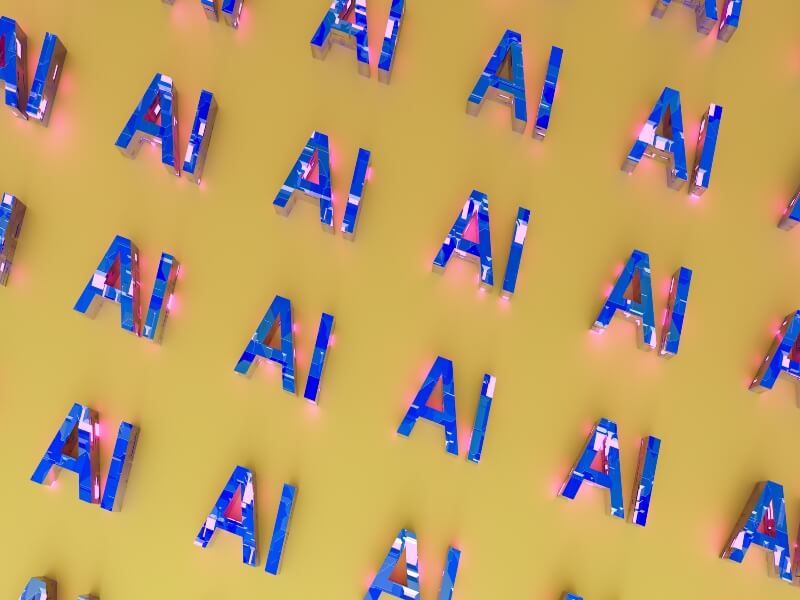In today's fast-paced digital world, the proliferation of AI-generated content has become a reality. As a result, ensuring the authenticity of written material has become a pressing concern for many individuals and businesses alike. The need for reliable AI detection tools is on the rise, empowering users to distinguish between human-crafted text and AI-generated content with precision.
Fortunately, the market now offers an array of innovative AI detection solutions, with some even available free of charge. These tools harness advanced Natural Language Processing (NLP) models to accurately detect AI-generated content, providing valuable insights to content creators, educators, and researchers. As content authenticity becomes paramount, utilizing a free AI content detector tool can be a valuable asset in safeguarding against potential misinformation or content manipulation.
As we delve into the realm of AI detection, we uncover powerful tools that empower users to distinguish between authentic human writing and AI-driven content. These AI detector tools have revolutionized the way we approach content creation, ensuring the preservation of integrity and originality in a world infused with artificial intelligence.
In this blog post, our attention will be directed towards four remarkable AI detection tools:
- Content at Scale
- Originality.AI
- Hugging Face
- Kazan SEO
These sophisticated tools assume the role of veritable beacons of integrity, rendering unparalleled insights into the provenance of written content, including the ability to detect ChatGPT and other AI-generated text. Through their discerning capabilities, they illuminate the profound impact of AI in our digital interactions, offering users the means to safeguard the essence of human expression amid the swift proliferation of AI-generated text.
Can AI Text be Detected?
The question of whether AI-generated text can be detected stands at the forefront of the current discourse on content authenticity and integrity. As the prevalence of AI-written content continues to grow, content creators, educators, and researchers seek robust AI detection tools capable of discerning between human-crafted text and AI-generated output. In this section, we delve into the possibilities and complexities surrounding the detection of AI-generated text and the pivotal role of AI detection tools in upholding content veracity.
With the rapid advancements in AI language models and natural language processing (NLP) techniques, AI-generated text has become increasingly sophisticated, often imitating human-like language patterns with remarkable accuracy. This uncanny resemblance between AI-generated text and human-authored content poses a profound challenge in accurately distinguishing between the two.
The necessity for AI detection tools arises from the need to ensure content integrity and authenticity. These tools serve as vigilant gatekeepers, employing intricate algorithms and advanced NLP models to scrutinize written material for AI-generated instances. By doing so, they empower users to preserve the essence of human expression and safeguard against potential misinformation or content manipulation.
One approach employed by AI detection tools involves analyzing specific linguistic features and patterns characteristic of AI-generated text. These tools can identify recurring patterns, sentence structures, or word choices indicative of AI language models. In addition to this, they might use machine learning techniques to continuously adapt and improve their detection capabilities, remaining resilient against evolving AI models.
An essential consideration in AI text detection is the need to differentiate between legitimate use cases of AI assistance and instances where AI-generated content may pose ethical or integrity concerns. Many content creators employ AI tools to streamline their writing process, enhance productivity, and generate content ideas. In such cases, the AI serves as a valuable aid rather than a deceptive tool.
The efficacy of AI detection tools lies in their ability to provide accurate and reliable insights into the presence of AI-generated text. As technology advances, these tools must adapt and stay ahead of ever-evolving AI models to maintain their integrity and relevance.
Moreover, the usage of AI detection tools does not only extend to identifying AI-generated text but also plays a pivotal role in verifying the authenticity of academic papers, research articles, and journalistic content. Their influence stretches across various industries where content integrity is of paramount importance.
In conclusion, the capability to detect AI-generated text is a critical aspect of ensuring content authenticity and trustworthiness in the digital age. AI detection tools stand as indispensable allies, preserving the sanctity of human expression while navigating the intricacies of AI-generated content. Their continued advancement and refinement are instrumental in upholding the veracity of written material across diverse domains and fostering an environment of transparency and integrity.
AI Detection Tool List
Now that we have established the significance of detecting AI-generated text, it is time to delve into the specific AI detection tools that aid in upholding content authenticity. In this AI Detection Tool List, we will explore four exceptional tools known for their prowess in discerning between human-crafted content and AI-generated text. These tools stand as pillars of integrity, providing valuable insights into the origins of written material and empowering users to preserve the essence of human expression amidst the rapid growth of AI-generated text.
- Content at Scale
Content at Scale emerges as a reliable and versatile platform, offering free text analysis to identify AI-generated content with precision. Developed by industry experts well-versed in SEO and NLP techniques, this tool provides not only AI detection but also content curation and SEO optimization services.
Its accuracy remains commendable, boasting an average rate of approximately 85%. Utilizing multiple NLP models, Content at Scale efficiently identifies instances of AI-generated text, assisting users in verifying content authenticity. However, it is essential to note that the tool's analysis is currently limited to 2500 characters, equivalent to approximately 400 words, which may impact the detection of longer texts.
- Originality.ai
Next on our list is Originality.AI, an outstanding AI detection tool recognized for its exceptional performance in identifying AI-generated content. This tool has garnered high acclaim for its accuracy and reliability in distinguishing between human and AI-written text.
Equipped with sophisticated algorithms and advanced NLP techniques, Originality.AI thoroughly examines written material, delivering precise insights into the presence of AI influence. Moreover, the tool offers the added benefit of plagiarism detection, providing a complementary capability that bolsters content integrity.
- Hugging Face
Hugging Face emerges as a prominent player in the realm of AI-generated content detection. Renowned for its state-of-the-art language models and NLP capabilities, this platform effectively detects AI-generated text, enabling users to maintain the authenticity of their written content.
Hugging Face's broad language support and versatility make it a valuable resource for content creators across diverse linguistic domains. It also offers a free AI content detection tool, allowing users to access AI detection capabilities without any cost. However, it is essential to consider that the accuracy of AI detection tools may vary depending on the language models employed.
- Kazan SEO
Last but not least, we turn our attention to Kazan SEO, a multifaceted content optimization and detection app. Kazan SEO employs co-relational content optimization techniques, aiding users in improving their website's search engine rankings. As an AI detection tool, Kazan SEO plays a pivotal role in identifying AI-generated content, ensuring the preservation of content integrity.
While Kazan SEO offers valuable AI detection services, it also provides users with a suite of SEO tools, including an email finder for outreach, backlink monitoring, and a planned organic traffic estimator feature. Moreover, its AI content detector tool is available for free, granting users the ability to detect AI-generated content without any cost.
In our quest for authenticity and integrity in content creation, these four AI detection tools, Content at Scale, Originality.AI, Hugging Face, and Kazan SEO, stand as formidable allies. By harnessing the capabilities of these cutting-edge tools, content creators, educators, and researchers can navigate the complexities of AI-generated content with confidence, safeguarding the sanctity of human expression in an increasingly AI-driven world.
How to Rewrite AI Text to Avoid Detection?
In our pursuit of maintaining content authenticity, the question arises: how can one effectively rewrite AI-generated text to evade detection? Rewriting AI text is a multifaceted endeavor that involves striking a delicate balance between preserving the intended message and avoiding detection by advanced AI detection tools. In this section, we will explore two primary approaches: manual rewriting or paraphrasing and the innovative solution offered by BridgeText to humanize AI-generated text.
Manually Rewrite or Paraphrasing Tools
One of the fundamental methods to avoid AI text detection is through manual rewriting or utilizing paraphrasing tools. Manual rewriting entails a creative and human-driven process, where content creators actively rephrase and restructure AI-generated text to imbue it with a distinct human touch. By manually crafting the content, authors can introduce unique nuances, stylistic variations, and contextual relevance that steer the text away from resembling AI-generated output.
However, manual rewriting can be time-consuming and may require significant expertise in the subject matter to ensure the coherence and accuracy of the content. As an alternative, content creators may resort to paraphrasing tools, which utilize sophisticated algorithms to rephrase sentences and alter word choices automatically. These tools can be beneficial in quickly generating variations of AI-generated text. Nevertheless, caution must be exercised, as excessive reliance on paraphrasing tools can result in unnatural and unoriginal content, potentially leading to detectable patterns by advanced AI detection tools.
Humanize AI Text with BridgeText
At this juncture, the role of BridgeText becomes paramount in humanizing AI-generated text and ensuring its seamless integration with human-crafted content. BridgeText stands as a vanguard in the battle against AI detection. Leveraging the perfect amalgamation of AI and human expertise, BridgeText transforms AI-generated text into genuine, human-like expressions that defy detection.
By leveraging expert human editors and meticulous attention to detail, BridgeText thoroughly examines AI-generated content, analyzing its structure, word choices, and overall context. Human editors infuse these texts with creativity, emotion, and authenticity, breathing life into the once-sterile AI output. This meticulous process ensures that every piece of content is humanized, transcending the boundaries of AI-generated text and preserving the essence of genuine human expression.
Moreover, BridgeText's expertise in humanizing AI-generated content grants content creators the liberty to benefit from AI tools without compromising content authenticity. Our skilled human editors meticulously work on the AI-written texts, infusing them with creativity, emotion, and authenticity. This seamless collaboration between AI-generated text and our human-crafted content results in a narrative that remains indistinguishable from purely human-authored work.
Incorporating BridgeText's humanization service not only upholds content integrity but also amplifies the value and impact of AI-generated text across various industries. For academic scholars, researchers, and students, BridgeText's meticulous human touch elevates AI-generated content to a level of credibility that meets the most stringent academic standards. Similarly, businesses and marketers can confidently utilize AI-generated text for brand communications, knowing that BridgeText has infused their content with authenticity and trustworthiness.
In conclusion, the art of rewriting AI-generated text to avoid detection is an intricate process that necessitates ingenuity, skill, and technological prowess. Manual rewriting and paraphrasing tools offer viable solutions, yet they may fall short in imparting a truly human essence to AI-generated content. It is BridgeText's pioneering approach that truly revolutionizes the landscape, skillfully blending AI capabilities with human expertise to humanize AI-generated text effectively. In embracing this innovative solution, content creators unlock a realm of possibilities where AI-generated text seamlessly merges with human expression, transcending the boundaries of detection and preserving the sanctity of authentic, human-authored content.
Let BridgeText reduce the predictability of, and otherwise humanize and detection-proof, your AI-generated text. Also BridgeText serves for thesis and dissertation statistics help.





